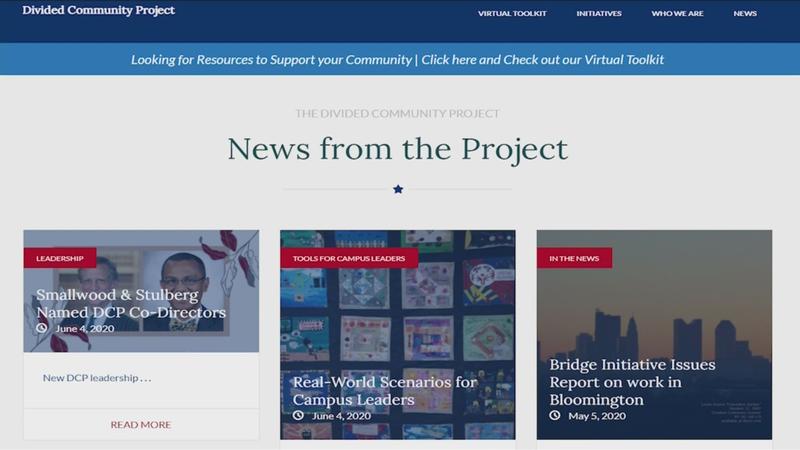Former Rochester mayor suggests city gets help from Divided Community Project
ROCHESTER, N.Y (WHEC) — Could out-of-state mediators help ease the tension in Rochester following the death of Daniel Prude? Former Mayor Bill Johnson thinks so. He suggested the city get guidance from the experts with the Divided Community Project.
So News10NBC decided to investigate how the program worked Bloomington, Indiana, another city facing racial tension.
[anvplayer video=”4961107″ station=”998131″]
The farmers market in Bloomington looks much like ours here in Rochester. Families stroll by vendors peddling produce and products fresh from the farm. But one of those farms allegedly grows more than kale and corn.
Internet sleuths uncovered the couple’s online connections to white supremacists. And when word spread, anti-fascists and white nationalists promised to descend on the comfortable college community, feeding flames of fear at the once family-friendly market.

[News10NBC]
The mayor was finally forced to shut down the market while the city tried to figure out what to do. Bloomington was a community in crisis.
In came the folks from the Divided Community Project based at the Ohio State University’s Moritz School of Law.
"The most important part is helping the community move forward from where it is. And often the wisdom to do that resides within the community,” said Carl Smallwood, an Ohio attorney and Co-director of the project.
Mediators from the Divided Community Project first assess the issues by talking to all the city’s stakeholders.
“It’s a process that’s often benefitted by having a third party neutral come into the community where some parties don’t trust other parties,” Smallwood said.
The hope is that during the process, mediators can help all sides find common ground.
But when those on one side of the issue hold press conferences praying for the peaceful support of city leaders, while the other side fills the streets nightly demanding that city leaders resign, how do these mediators possibly find a middle ground?
Smallwood says it’s difficult but it can be done. After all, most in the city have the same goal: The acknowledgment of systemic racism, a change in policing policies and assurances that the city work toward judicial equity.
"There often are deeper underlying community issues that need to be addressed," Smallwood said.
But to address them, Rochester may need guidance in finding its way to the golden ground of compromise.
If city leaders want help from the Divided Community Project, all they need to do is ask. The help is free; a grant pays for the mediators.
The full interview with Smallwood is in the video player below (mobile users, click here). The questions are transcribed underneath the video because the interview took place over Zoom and they were not audible.
[anvplayer video=”4961080″ station=”998131″]
- I’m sure you’re aware of what’s happened in Rochester over the last several days. After the community learned of the death of Daniel Prude there were nightly protests. The city’s police chief and entire command staff have stepped down, and protesters are calling on the mayor and police union president to resign. First could you explain what the Divided Community Project is and how it works? (answer at 1:22)
- So do you want to get the parties in conflict at a round table of sorts? Is that the goal? (answer at 3:34)
- Are you looking for solutions to the conflict? After you have assessed the positions of all involved, do the mediators then come up with workable solutions? (answer at 8:35)
- We’re examining what happened when you all mediated the conflict in Bloomington, Indiana. The town has a popular farmer’s market. But when some residents learned of one of the farmer’s affiliation with white supremacist groups it became a difficult situation. Anti-fascists and white nationalists threatened to come to the town. The farmer’s market was no longer viewed as safe. When the mayor was finally forced to shut the market down temporarily they asked for the help of the Divided Community. Were you able to help Bloomington find a way toward healing? How was that situation resolved? (answer at 10:50)
- So was the Bloomington community about to find a solution to its crisis? (we’re now at 12:00 minutes)
- What happened to the farmer who was believed to hold white supremacist views. Were they allowed to remain at the market? (answer at 14:00)
- And what is the bridge initiative exactly? Is that just used when a city is in crisis? (answer at 15:20)
- In our community it would appear that the two groups are very far apart. We have faith leaders who support city leaders and protesters who are demanding everyone in positions of power resign. When there is no middle ground, how does a mediator expect to find one? (answer at 20:16)
- Both sides have to be willing to compromise for this to be successful right? If one side is intransigent it, this strategy doesn’t work. (answer at 22:35)
- So you’re proposing mediators with decades of experience guide this process. It sounds time-intensive in reaching a consensus, then implementing a plan could take months. This sounds expensive. How much does it cost? (answer at 24:56)
- It really sounds like cities have little to lose. They get impartial guidance from someone with a wealth of experience and it doesn’t cost them anything. (answer at 26:50)